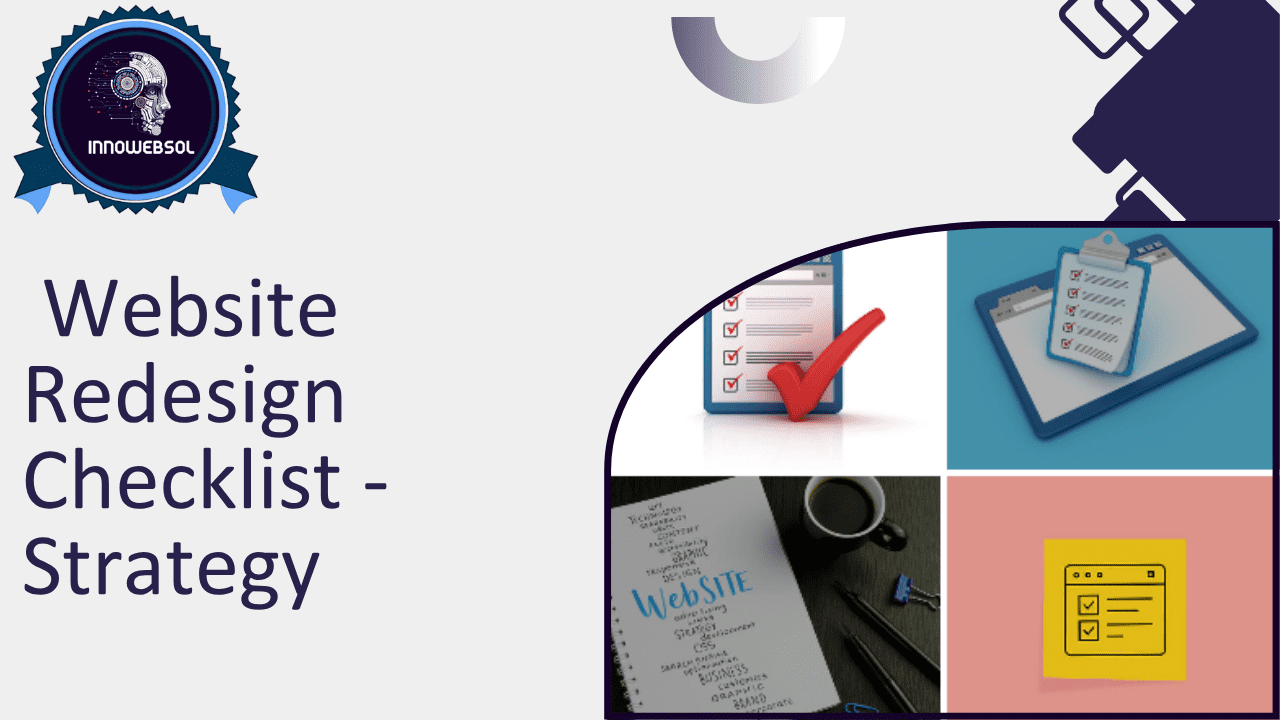Planning a website overhaul? Following a thorough website redesign checklist can make all the difference between a successful relaunch and a stressful experience. A well-organized checklist ensures you don’t miss essential steps, keeps your project on schedule, and helps you achieve your business goals.
Today, businesses know that their websites are more than online brochures. They’re powerful tools for brand identity, customer engagement, and driving sales. But as technology, design trends, and user expectations evolve, even the best websites eventually need a refresh.
In this comprehensive guide, you’ll learn what goes into a website redesign process, creative website redesign ideas to inspire you, and practical tips to use a website redesign checklist template effectively. We’ll also look at website redesign examples to help you visualize what’s possible for your own project.
Why You Need a Website Redesign Checklist
Jumping into a redesign without a plan can be overwhelming. A website redesign checklist keeps your team focused, minimizes costly mistakes, and ensures every part of your site aligns with your goals.
Benefits of using a website redesign checklist include:
- Maintaining project organization and accountability
- Saving time and resources by avoiding repeated work
- Ensuring the new site meets user expectations and technical standards
- Supporting SEO best practices and content strategy
- Helping secure stakeholder buy-in with clear steps and timelines

Understanding the Website Redesign Process
Before diving into tasks, it’s important to understand the website redesign process. A typical project unfolds in several key stages:
Research and Discovery
- Analyze your current site’s performance
- Gather analytics on user behavior, traffic, and conversion rates
- Conduct competitor analysis to identify strengths and weaknesses
- Get feedback from users and stakeholders
Goal Setting
- Define what you want your new website to achieve
- Set measurable objectives, such as increased traffic, better user experience, or higher conversion rates
Planning and Strategy
- Map out your sitemap and content structure
- Create wireframes or prototypes
- Plan SEO updates and keyword strategies
Design and Development
- Choose modern design elements and color schemes
- Develop mobile-friendly layouts
- Integrate new functionalities and tools
Testing and Quality Assurance
- Check functionality across browsers and devices
- Review page load speeds and security
- Test forms, links, and interactive elements
Launch and Post-Launch
- Deploy the new website
- Monitor analytics and user feedback
- Make ongoing improvements
Each step in the website redesign process should be included in your checklist to keep the project on track.
Website Redesign Checklist Template: What to Include
Having a website redesign checklist template makes it easy to follow best practices and avoid missing crucial details. Here’s a comprehensive list to guide your project.
Review Existing Website Performance
Start by evaluating your current website’s:
- Traffic patterns and sources
- Top-performing pages
- Bounce rates and time on page
- Conversion funnels
- SEO rankings for primary keywords
Set Clear Goals for the Redesign
Document specific goals like:
- Improving page load speeds
- Enhancing user experience on mobile devices
- Increasing organic traffic
- Updating brand visuals and messaging
Audit Your Content
- Identify outdated or irrelevant content
- Highlight pages to keep, update, or remove
- Plan new content creation for gaps in information
- Review keyword targeting for SEO improvements
Update Visual Design Elements
- Select color palettes, typography, and imagery
- Create mockups or wireframes for approval
- Ensure design reflects your brand identity
Check Technical SEO Factors
- Update meta titles and descriptions
- Optimize URLs for readability
- Implement proper header tag hierarchy
- Check for duplicate content and broken links
Plan User Experience (UX) Improvements
- Simplify navigation menus
- Design clear calls-to-action
- Ensure mobile responsiveness
- Add accessibility features for users with disabilities
Integrate New Features
Consider incorporating:
- Chatbots for customer support
- E-commerce capabilities
- Interactive forms and surveys
- Social media feeds or integrations
Prepare for Launch
- Test the staging site thoroughly
- Back up your existing site
- Plan a launch timeline to minimize disruptions
- Communicate changes to users and stakeholders
Post-Launch Tasks
- Monitor site analytics for traffic changes
- Check for unexpected issues or errors
- Gather user feedback for future tweaks
- Submit updated sitemaps to search engines
Using a website redesign checklist template ensures nothing slips through the cracks during your project.
Website Redesign Ideas to Inspire Your Project
Redesigning your website is an opportunity to elevate your brand and deliver a better user experience. Here are some website redesign ideas to consider:
- Introduce more video content for higher engagement
- Use micro-animations to guide users subtly through pages
- Implement dark mode for modern aesthetics
- Highlight user-generated content like reviews and testimonials
- Create long-scroll pages with interactive elements
- Add storytelling elements through visuals and copywriting
- Simplify navigation with a minimalist design approach
Even small creative touches can modernize your website and make it stand out in a competitive online space.
Website Redesign Examples: Learning from Real Projects
Looking at website redesign examples can spark new ideas and help you understand how different brands approach the process. Here are some ways companies successfully execute a redesign:
- A retail business improves mobile usability, leading to higher mobile sales
- A service company refreshes its visual branding and sees increased trust from clients
- An e-commerce site streamlines its checkout process, reducing cart abandonment rates
- A nonprofit updates its website for accessibility and expands its audience reach
- A B2B company adds new lead generation forms and sees a boost in inquiries
These website redesign examples highlight the importance of aligning design choices with business goals. Your own redesign should reflect your brand’s unique needs and your audience’s expectations.

SEO Considerations in Your Website Redesign Checklist
A critical part of your website redesign checklist is ensuring that your SEO performance doesn’t suffer during the transition. Many businesses lose rankings because they overlook SEO during a redesign.
Steps to protect your SEO:
- Crawl your current website to map existing URLs
- Implement 301 redirects for any changed URLs
- Retain high-value content and keywords
- Check internal linking structures
- Monitor rankings after launch for any significant drops
Including these tasks in your checklist can save you from a significant traffic loss post-launch.
Content Strategy in the Website Redesign Process
Your website redesign isn’t just about visuals. A solid content strategy ensures your messaging connects with users and supports SEO goals.
Key elements to consider:
- Identify content gaps that need new pages or blog posts
- Refresh outdated information to maintain authority
- Optimize headlines and text for clarity and engagement
- Align tone and voice with your brand personality
A successful redesign balances design and content, keeping users engaged while delivering valuable information.
Common Mistakes to Avoid During a Website Redesign
Even with a checklist, it’s easy to slip up. Avoid these common mistakes:
- Ignoring mobile usability
- Forgetting to back up the current website
- Overloading pages with large images, slowing load times
- Neglecting SEO redirects and losing rankings
- Launching without thorough testing across devices and browsers
- Changing content structure without considering user experience
Planning ahead and following a structured checklist minimizes these risks.
How Long Does the Website Redesign Process Take?
Timelines vary based on website size and complexity, but a typical redesign process might look like this:
- Discovery and planning: 2-3 weeks
- Design and revisions: 3-5 weeks
- Development: 4-6 weeks
- Testing and QA: 1-2 weeks
- Launch: 1 week
- Post-launch monitoring: ongoing
Rushing the process often leads to costly errors. Build enough time into your schedule to complete each step thoroughly.
Why EEAT Matters in Website Redesign
Google’s EEAT principles—Expertise, Authoritativeness, and Trustworthiness—play a significant role in how your site ranks in search results. A website redesign checklist should include:
- Displaying clear author information for articles
- Citing reputable sources
- Adding trust signals like certifications, testimonials, and security badges
- Maintaining consistent, professional branding
These details not only help with SEO but also build confidence with your visitors.
Conclusion: Start Your Website Redesign the Right Way
A website redesign checklist is your roadmap to creating a website that’s not just visually stunning but also effective in achieving business goals. Whether you’re updating your branding, improving usability, or boosting SEO performance, a detailed checklist helps ensure a smooth process and a successful launch.
Take inspiration from website redesign examples, explore fresh website redesign ideas, and use a website redesign checklist template to stay organized. Investing time in careful planning will pay off with a website that delivers a superior user experience and supports your business’s growth.
Ready to begin? Start building your checklist today and take the first step toward a website that truly represents your brand’s potential.

